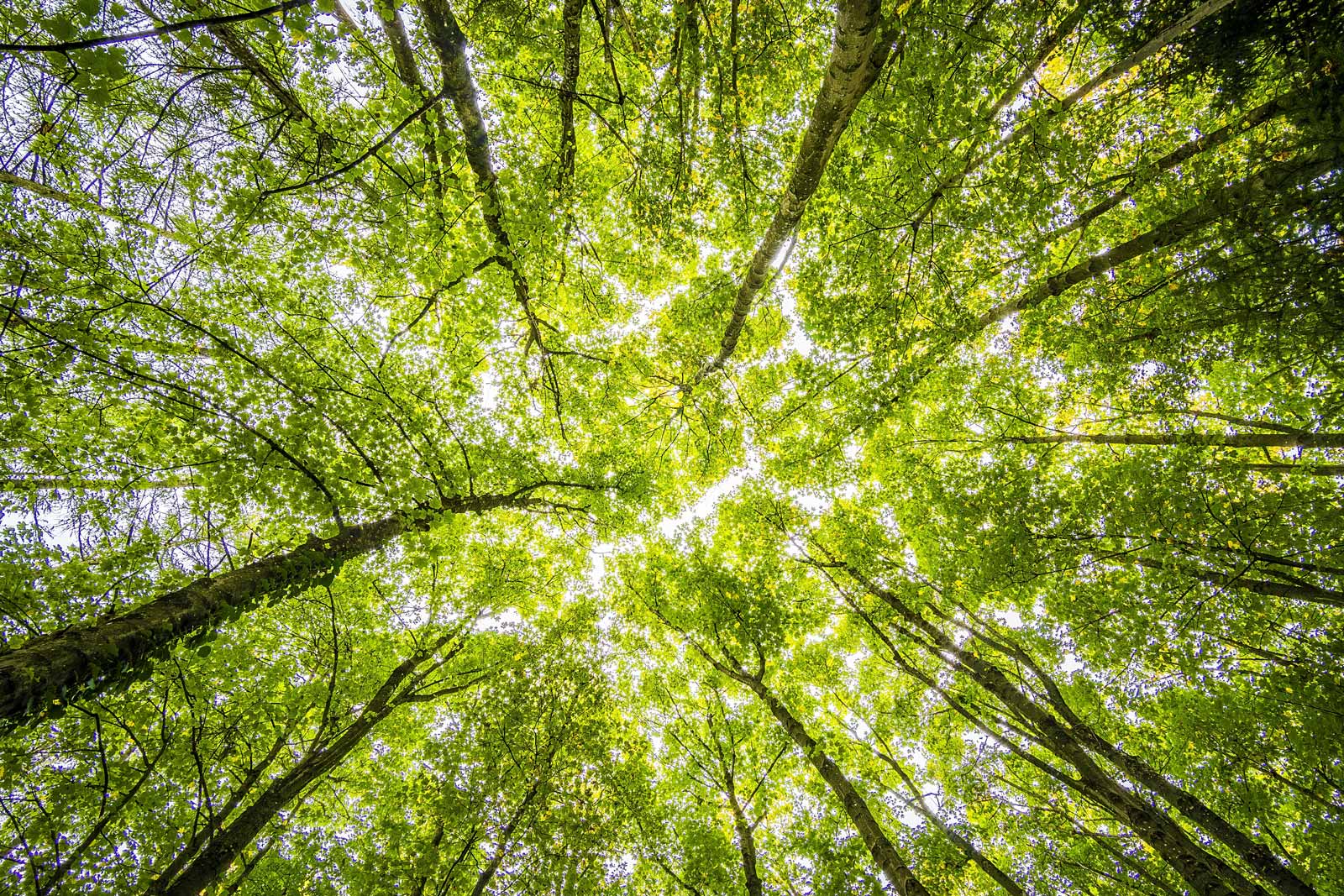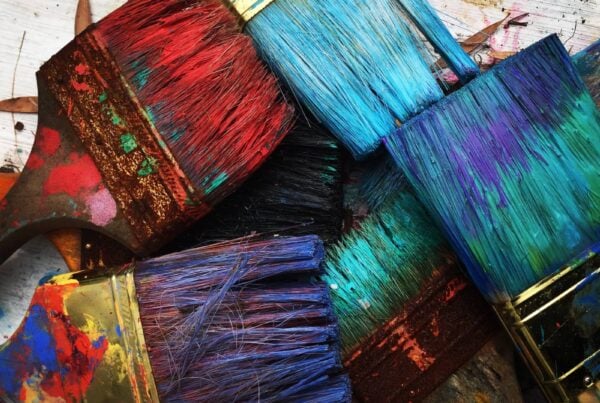Article commissioned by Hickman Design, Author – Dunja Karanovic
A note from Hickman Design: “What inspired this piece was a discussion with a colleague about the impact of our lives on the environment and how we can reduce the damage we do to this world. The main conclusion was, we will always have an effect on this world, its about mitigating the damage we do and minimising the waste we produce. We will never be able to fully live hand in hand producing art and looking after the environment, but can reduce the effects by having good studio practice.”
As an art practice, printmaking is notoriously messy. If you are considering trying out techniques such as aquatint or etching, you will probably have to say goodbye to neat manicures. I have even heard some artists comment on how they prefer not to shake hands with printmakers. That being said, printmakers are some of the most pedantic people when it comes to handling and choosing materials, and keeping a tidy (or at least organized) studio. In recent years, many of us have become more aware of our ecological footprint, and how our practices affect the overall state of the environment.
In this article, we will be looking over some of the impacts of different printmaking techniques on both our health and the environment, as well as a variety of tips and ideas we can try to apply to make our printmaking practices more sustainable.
Some of the oldest forms of printmaking would nowadays be considered green, low-waste alternatives – the earliest techniques such as woodcut printing, involved not only a biodegradable matrix but also rice paper, water-based inks, and air-drying. As technology progressed, we have made a lot of improvements which allowed us to print a large number of impressions in a small amount of time.
However, this also meant using a lot of dangerous chemicals, PVC ink which releases microplastics into the air and water, and non-degradable materials, as well as producing more waste. Even if, for a moment, we set aside the ingredients of each material involved in making an edition, just the containers used for keeping different acids, inks, oils, and paint thinners create a significant amount of waste which, in most cases, isn’t fit for recycling or composting.
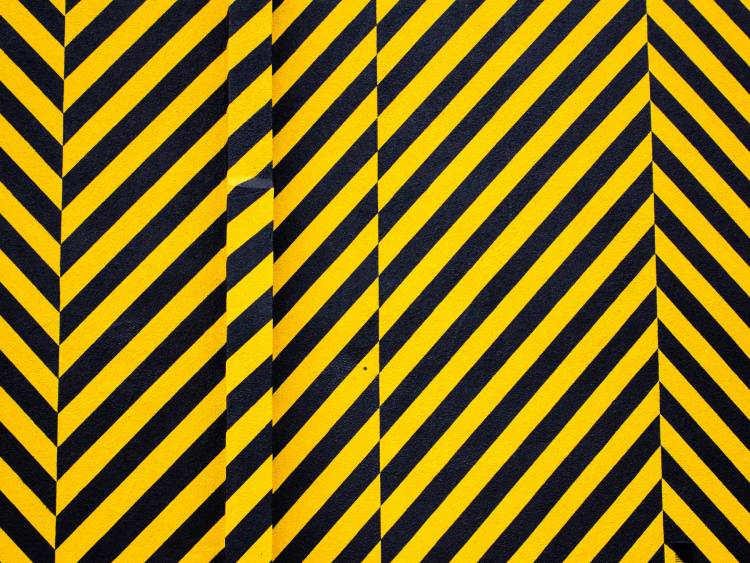
In terms of health, there are several concerns; many techniques belonging to the intaglio group use a wide array of hazardous chemicals, and more often than not, they are difficult to dispose of. Powder rosin, or colophony, which is used in aquatint, can do serious damage to the lungs if inhaled, and it never leaves our system. The technique also requires various substances like tar, petrol, oil-based paint thinners, and acids, which can cause serious damage to the skin, eyes, and respiratory system, as well as cause fires and water pollution if not handled properly.
Photosensitive emulsions used in screen printing and cyanotype also contain toxic substances based on ammonia, cyanide, and iron, which need to be handled with caution. Long-term exposure to paint thinners such as turpentine, acetone, and benzene can cause serious damage to the nervous system, and even lead to liver and lung cancer.
All things considered, there are many reasons to think about and apply healthier, more sustainable, and environmentally friendly alternatives in the practice of printmaking. The good news is, there are many helpful examples and resources to look into.
Table of Contents
General Suggestions – Reducing Waste in the Studio
Before we get into the different eco-friendly products which are available on the market, it’s important to have in mind some of the small changes we can add to our daily studio practice to reduce waste, and by extension, lessen the pressure we are putting on natural resources.
Sharing A Studio
A good place to start is considering using a shared studio space – if more than one person (responsibly) uses the same resources, there is a lesser chance of wasting materials – you can save up by chipping in and sharing equipment, and prevent porous materials from spoiling, hardening, or drying out due to irregular use.
Planning Artworks
Another thing is planning – before you start working on an edition, think about which techniques would be suitable for the sketch/idea you have, whether or not you already have the materials on hand, and if there are possibilities of reusing some of the leftovers from previous projects. This could mean working with the uncut surfaces of an old linoleum matrix, using the backside of a copper/zinc plate for intaglio, or reusing paper for test prints. Planning also involves thinking about formats, creating sketches based on formats we have on hand, or even going for smaller formats in general.
Recycle Paper & Materials
This of course isn’t suitable for everyone, so it’s useful to think of ways in which we can use the clean leftover paper. Have you tried making your own paper? Scraps from cotton-based paper we often use in printmaking can make an interesting texture for silkscreen, and especially for relief printing.
Setting up a personal recycling system in your studio is always a good idea – perhaps a few designated areas for keeping leftover papers, reusable bits of linoleum, old newspaper, cardboard, etc.
Source Materials Locally
Think about local resources – getting materials from online shops is often the only option, but we should take into account all the additional costs of shipping, such as plastic packaging and CO2 emissions. Although local printmaking supplies are not so easy to come by (compared to things like local clay or natural dyes used in other forms of art), it is useful to get to know some of the local businesses working in your vicinity – you might find a flooring company willing to sell scraps of linoleum they can’t use, or even a paper mill or printing company to make an arrangement with.
Experiment With Eco Friendly Options
Finally – experimentation! Experimenting with different supplies is an integral part of the process (and the history) of printmaking, so if you can’t find a suitable eco-product on the market, think about making one. A lot of traditional tricks involve supplies that can be found in the kitchen, such as sugar-lift aquatint, adding lemon juice to your etching solution, and so on.
Maybe you will get the result you are looking for by swapping store-bought supplies with natural ingredients such as beeswax, sodium bicarbonate, or casein. Collagraphy and anthotype are two examples of techniques that don’t require any toxic chemicals and are a great starting point for experimenting with different plant-based textures and dyes. You can check out this blog about making your own relief inks.
Lino Printing & Mono Printing
Relief Printing Inks
Lino printing, and relief printing in general, are relatively simple compared to some other techniques because the matrix is created by hand instead of etching or chemical processes. In this sense, the focus of considering the environment in the practice of lino printing is thinking about the ingredients used to make the ink. Due to the simplicity of the process, lino printing has become a very popular technique in school curriculums and arts and crafts courses, so more and more manufacturers are producing water-based and oil hybrid inks.
High-quality water-based inks such as Speedball Relief Ink or Caligo Safe Wash can be washed off with water and soap, which is a big step forward considering all the downsides of using paint thinners or solvents. It is important to note, however, that inks are made up of 10-20% pigments, 5-10% additives, and 75% carriers, and even though the carrier is water-based, that small percentage of chemical additives and pigment ingredients still means the ink is not compostable. An ink which is 100% made of renewable, natural ingredients has yet to be produced.
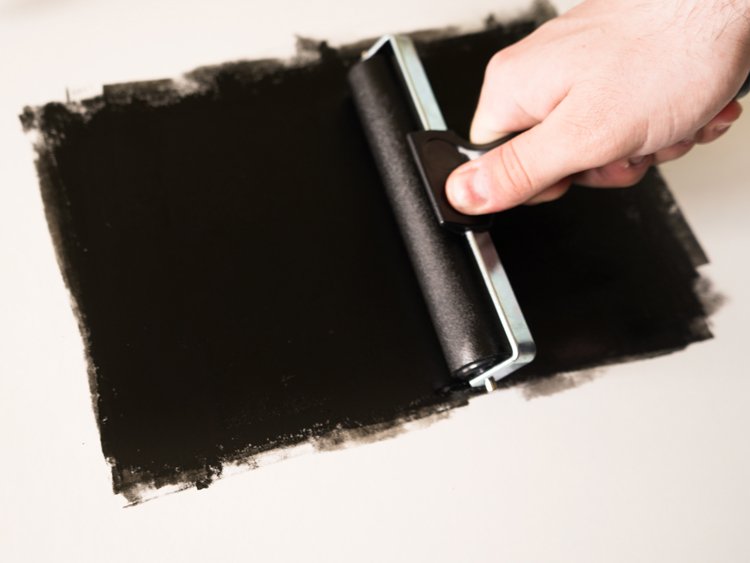
Issues With Linoleum For Printing
On the other hand, the crafting industry doesn’t always go hand in hand with environmental protection, so it’s worth mentioning that many lino printing kits contain synthetic, easy-cut linoleums which are not biodegradable (not to mention all the excess plastic used for packaging). Real lino sheets are made from sawdust, rosins, linseed oil, and ground limestone, which makes the material safe for composting. Flooring companies might be willing to sell you offcuts of this kind of linoleum.
Screen Printing
Types of Screen Printing Inks
Screen printing is another favourite for many people because of its simplicity and the fact that it can be applied to different materials. It is widely used by artisans opting for slow fashion alternatives to the textile industry. Some of the environmental issues are similar to those of lino printing, although there are a few key differences.
In most cases, the screen printing process uses plastisol-based inks, which are known carcinogens and pollutants. These PVC inks are difficult to clean and dispose of without the use of chemicals (and releasing microplastics into water) and are considered harmful to the skin and overall health (a problem unique to screen printing as other techniques are rarely used for printing on garments).
Water-based inks are much safer in regards to the environment, but they have a few disadvantages when it comes to the way different colours come out. PVC inks and synthetic colours in general are the only options for creating opaque, neon, and resistant prints, but the long-term consequences of having microplastics in almost every part of our surroundings are becoming more and more obvious. More information on types of screen printing inks used in the screen printing industry.
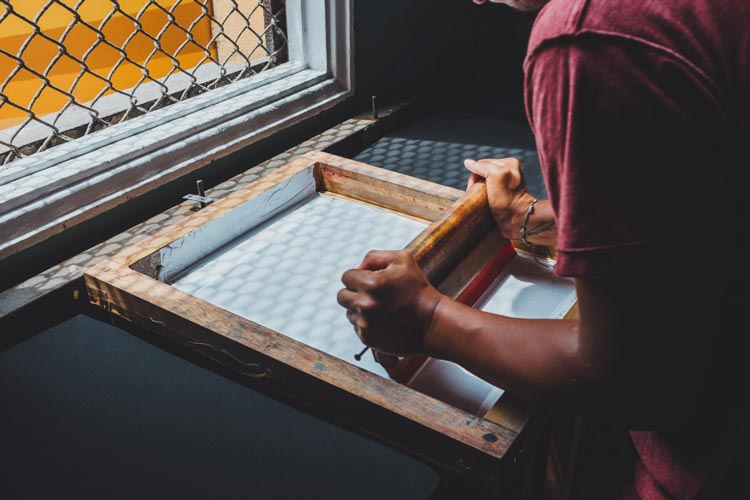
Screen Printing Emulsion
When it comes to the process itself, there are a few easy ways of reducing waste while using this technique. For a start, using washable emulsions for coating a screen means it can be reused as long as it is handled with care, some methods make use of single use screens/exposures for screen printing which create a lot of waste. More modern screen printing methods make use of emulsions that are reusable and resistant to decay/use as long they are well looked after.
Cleaning Screens
Citrus-based cleaners are a good alternative to acids for removing emulsion from a screen, and pressurized baking soda spray works well on solvents and water-based inks. Reusing old fabrics is a way to reduce waste from test prints, as well as washing ink out of the test prints before it sets. Planning out some details before we start working is also applicable here; different colours can be printed off of the same screen if we leave enough space in between, and printing a reference print on acetate or tracing paper makes aligning easier. Acetate paper used for this purpose can also be washed and reused.
Exposing Screens
Exposing screens in natural sunlight is also a great low-tech, energy efficient alternative that can be used outside of the studio.
Intaglio
Acids Used in Etching Process
Intaglio, although an incredibly versatile technique, is easily one of the main villains of printmaking in terms of the environment and sustainability. The combination of acids, solvents, and other chemicals involved in creating etchings, aquatints, and other forms of intaglio has proven to be detrimental to the health of artists, as well as incredibly toxic for the environment once they evaporate or get into groundwater.
One of the biggest contributors to the development of non-toxic intaglio techniques and supplies is the Danish printmaker, Henrik Bøegh. In 2003, he published the Handbook of Non-Toxic Intaglio, in which he presented some of the safest alternatives for traditional intaglio materials, such as acrylic resists, photopolymer film, and spray-on aquatint.
The main difference between intaglio and other printmaking techniques is the use of acidic solutions to create matrices from zinc or copper plates. The most commonly used is nitric acid, which can cause heavy long-term damage to the eyes, lungs, and kidneys. Highly reactive acids are also known for causing severe burns and skin damage, especially when handled by inexperienced art students and hobbyists. Metal Salt Etching, developed by Friedhard Kiekeben, is a relatively new method which is free of noxious fumes and dangerous reactions. Examples of this kind of etching solution are the Edinburgh Etch and The Saline Sulphate Etch.
Reuse Paper
When it comes to other aspects of the process, similar rules apply to this technique. Intaglio uses expensive, high-quality paper so it helps to use the backsides of old prints for testing matrices, as well as keeping leftovers which can later be used for recycling, cleaning, etc.
Reuse Plates
You could also use the backside of an already etched plate by covering your etched side with tape or ground and then etch into the unused/backside of the plate, this would mean you end using less plates/metal.
Intaglio Printing Inks
Water-based inks such as Speedball, Caligo, and Charbonnel are a good investment to avoid using strong chemicals for cleaning, but it is also useful to consider covering and reusing leftover ink instead of cleaning it up after printing.
Cleaning Intaglio Plates
The cleaning process could be a topic of its own when it comes to creating an eco-friendly printmaking studio, but for the purposes of this article, we will mention the importance of using water-based supplies which are safe to pour down the drain, and avoiding single-use paper towels and synthetic sponges. Upcycled fabrics are a good alternative for cleaning up printing equipment, and newspapers can be used to wipe away excess ink off copper and zinc plates.
In general, there have been a lot of improvements in the printmaking process when it comes to its long-term effects on the environment, but there are still many issues to be figured out. The important thing is to be mindful of the consequences our practices have on our health and surroundings, and to keep experimenting and looking for ways of creating more art and less pollution in the world.
References and Further Reading:
- Environmental Ethics In The Printmaking Studio
- What Are The Effects Of Printmaking On The Environment
- What is the Most Sustainable Ink?
- Green Art Guide – Printmaking: Artists and Techniques
- Handbook of Non-Toxic Intaglio by Henrik Boegh
- Non-Toxic Printmaking
- Grafisk Eksperimentarim – Non-toxic Intaglio
- Resource Links – Safer Printmaking – University of Saskatchewan
- Eco-friendly Screen Printing
- https://www.iconprinting.com/blog/eco-friendly-screen-printing-tips/
- https://www.garmentprinting.co.uk/blog/eco-friendly-screen-printing-is-it-possible/
- https://www.screenprinting.com/blogs/news/how-to-do-eco-friendly-screen-printing
- https://www.screenprinting.com/blogs/news/eco-friendly-screen-printing-101




